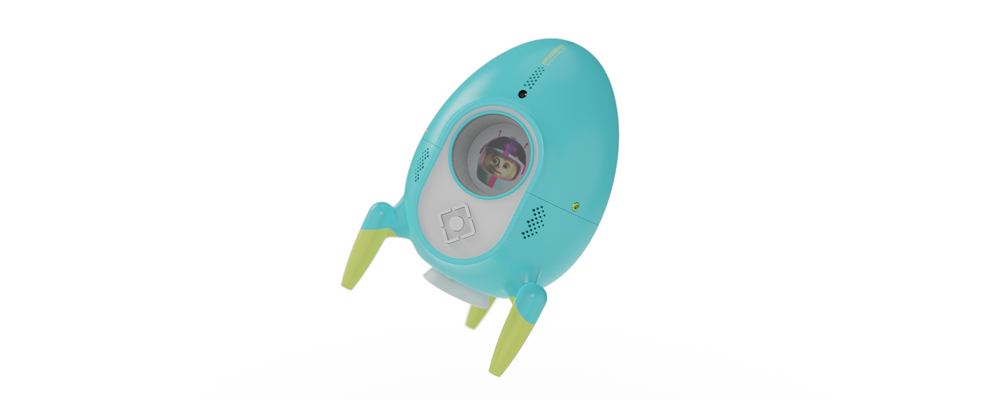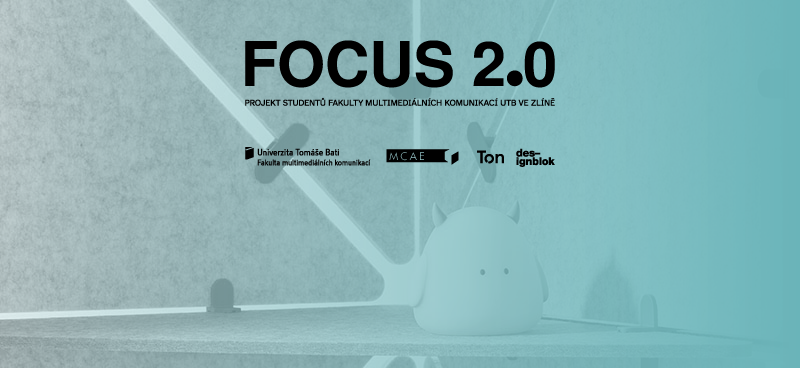
FOCUS 2.0: Zlín design for maximizing concentration heads to Designblok 25
6. October 2025Students and teachers from the Faculty of Multimedia Communications at Tomas Bata University in Zlín, in collaboration with MCAE Systems, a company specializing in professional 3D printing, will present an exhibition project called FOCUS 2.0 at the largest Czech design show, Designblok 25. The exhibition, which presents a new collection of sophisticated product designs for deeper concentration and combating information overload, will be on display from October 8 to 12, 2025, at the Křižík Pavilions at the Prague Exhibition Grounds, Výstaviště 67, Praha 7 – Bubeneč.
The FOCUS 2.0 project is a continuation of the previous FOCUS exhibition project, which was presented to great acclaim at Berlin Design Week 2025. The new collection, designed by students and teachers from the Industrial Design Studio at FMC TBU in Zlín, was created using the latest additive 3D printing technologies from MCAE Systems, including full-color 3D printing and 3D metal printing. Visitors to Designblok 25 will also have the opportunity to view key products from the previous FOCUS exhibition presented in Berlin.
Design as a tool for mental balance and concentration
The FOCUS 2.0 collection comprehensively addresses the topic of concentration and mental well-being. Designers focused on products that help in critical areas – from sleep and mental health to effective work and fine motor skills.
“Nowadays, it’s easy to lose focus, and we often don’t realize how much stress we’re accumulating. That’s why we focused on early stress detection and how to discreetly and effectively alleviate it. The Neuma bracelet is designed to discreetly monitor physiological signals (PPG/HRV, EDA) and use gentle vibrations to guide the user to calming breathing before tension develops into a panic attack,” says Marek Ondřej, designer of the minimalist Neuma bracelet, describing the design approach.
Another part of the collection focuses on targeted assistance for specific needs. “The Rings of Assistance product was created as a therapeutic and educational aid for people with ADHD, but it can be used by anyone who needs to actively engage their hands and support concentration. The carefully selected materials and textures of the rings contribute to the development of fine motor skills, help release tension, stimulate tactile perception, and serve as a stimulus for sensory integration,” adds Vladimír Vykoukal, the author of the rings, about the functional design.
FOCUS 2.0 Project Product Collection
Jan Kaděra – LUMORA
The headphones are designed to help you focus while working, studying, or reading. Each ear cup has a pull-out LED module that lights up your keyboard, book, or workspace. Users can adjust the brightness and temperature of the light themselves – cool for alertness during the day, warm for peaceful evening reading. When direct light is not needed, a soft LED ring on the headphones signals “do not disturb” mode to those around you with a pulsating light. Controls are operated by touch on the ear cups or via a mobile app. The headphones thus combine sound, light, and visual communication into a tool for maximum concentration.

Jakub Hrdina – SOMNIO
SOMNIO is a minimalist smart sleep mask that integrates light, vibration, and sound stimulation with biofeedback technology to improve sleep quality, relaxation, and daytime concentration. Designed with an ergonomic shape and premium materials, it offers personalized sensory stimuli that adapt to the user’s physiological state. Combining aesthetic simplicity with advanced functionality, SOMNIO bridges wellness and design innovation to create a discreet yet effective tool for restorative rest and conscious concentration.
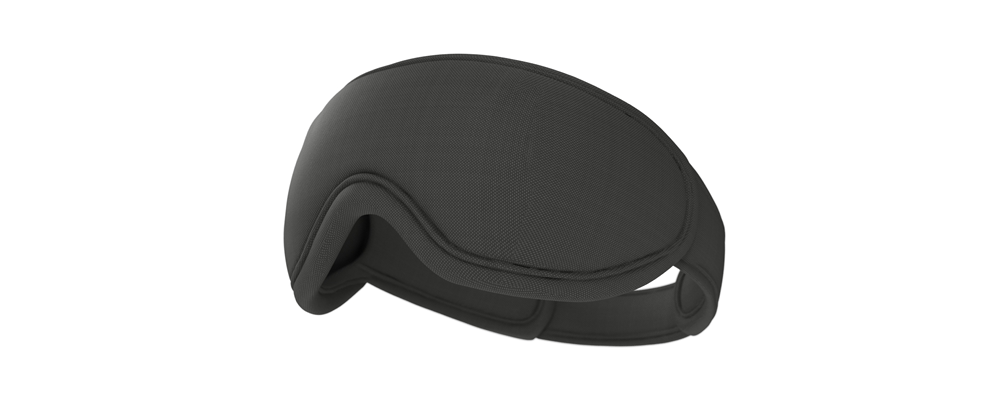
Vladimír Vykoukal – RINGS OF ASSISTANCE
RINGS OF ASSISTANCE are a therapeutic and educational aid designed for children and adults with attention deficit hyperactivity disorder (ADHD). Their main purpose is to promote mental well-being, improve concentration, and provide a suitable activity for the hands. Through carefully selected materials, the rings contribute to the development of fine motor skills, proper expression of emotions, and serve as a means of learning about shapes, textures, and materials. At the same time, they stimulate tactile perception and support sensory integration, making them an effective part of therapeutic and educational processes.
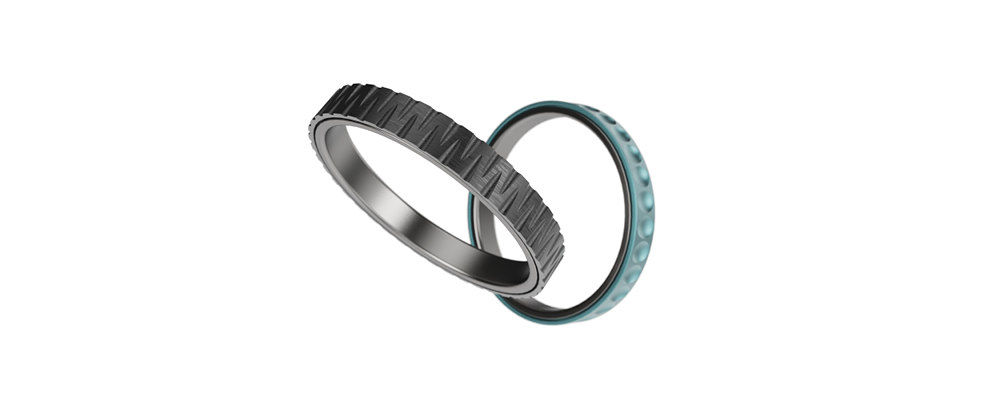
Marek Ondřej – NEUMA
NEUMA is a minimalist bracelet without a display for the early detection and alleviation of stress or panic attacks. It combines PPG/HRV, EDA, and skin temperature sensing; when tension rises, it discreetly vibrates (or gently lights up) and guides the wearer to calming breathing. The accompanying app records episodes and allows you to add notes about what happened. Ready for NFC functionality and charged by a magnetic puck with pogo pins, NEUMA’s two-module design remains unobtrusive, accurate, and comfortable for all-day wear.
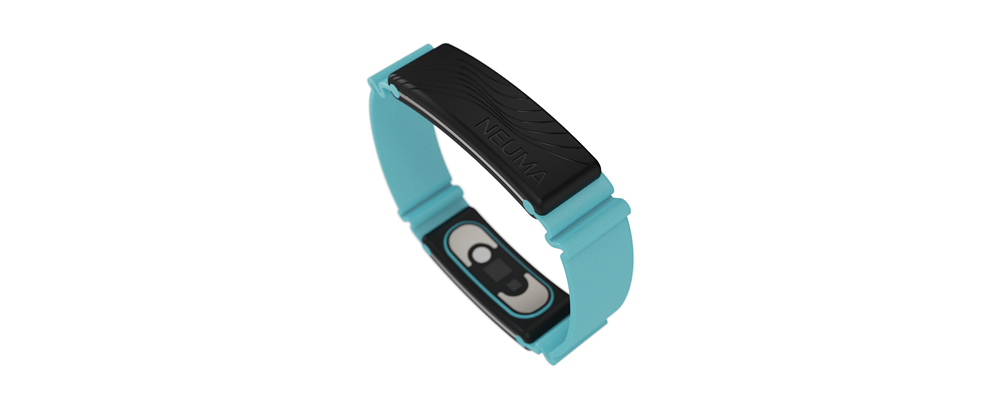
Martin Surman – PINQ
The PINQ product actively improves concentration while exercising the musculoskeletal system, including fine motor skills of the hand. The product consists of a handle with an integrated battery and electronic perception and communication modules, and an interactive circular target-shaped surface that uses built-in electronic sensors to measure the accuracy and frequency of ball strikes. The measured values can then be displayed via a mobile app.

Ondřej Puchta – CHUCK
The CHUCK communicator is a device designed for maximum communication efficiency at work. It has high-quality microphones and speakers facing in all directions, is mainly voice-controlled, and is used for planning and communication via calls, text or voice messages. Although CHUCK is equipped with a triangular display, it is not designed to display graphic content, whether text, images, or videos, but serves primarily as a control interface. This minimizes unwanted distractions from work and improves the user’s concentration, performance, and mental balance.

Štěpán Dlabaja – KATZEGOTCHI 2
KATZEGOTCHI 2 is a toy based on the Tamagotchi concept, using artificial intelligence. Modern technology allows children to communicate with the animal in natural ways, such as voice or gestures. The toy encourages a sense of responsibility in children, as they must take care of the animal and follow its daily routine, otherwise they may lose it. The use of artificial intelligence adds a new dimension to this responsibility, as the animal gradually develops a personality and remembers new information. It also gives parents a smart tool for teaching their children a regular routine, as the toy’s cycle is adjustable.
